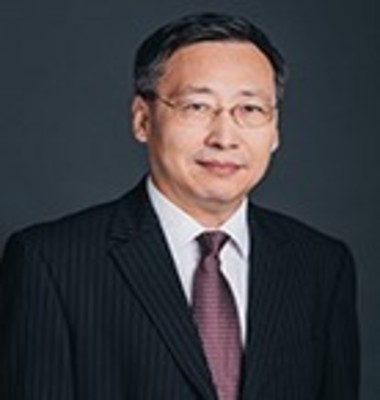




Team

John WANG
Professor
Department of Materials Science and Engineering
Professor Wang’s research focuses on new functional ceramics, electroceramic and composite materials that are inevitably required for the next generation of energy generation and storage, electronics and healthcare. He has more than 30 years of teaching and research experience in functional materials and materials chemistry.
His research group has been working on novel fabrication techniques, and establishing correlations between structural parametersand functional properties. More recently, Professor Wang’s research focuses on carbon-based materials, nanohybrids and mesoporous materials for energy generation, energy storage and biomedical applications. He and his research group have successfully developed several types of new nanohybrids and mesoporous materials for applications in energy generation storage and drug delivery.
- Ph.D. (Ceramics), University of Leeds, UK, 1987
2019 Academician of Asia Pacific Academy of Materials (APAM).
- Nanostructured materials for sustainable energy
- Biomaterials and nano-hybrid materials for imaging and treatment
- Zang, Wenjie, Zongkui Kou, Stephen J. Pennycook, and John Wang. Heterogeneous Single Atom Electrocatalysis, Where “Singles” Are “Married”. Advanced Energy Materials, 10, 9 (2020): 1903181. https://doi.org/10.1002/aenm.201903181
- Pan, Zhenghui, Jie Yang, Lianhui Li, Xiaorui Gao, Lixing Kang, Yifu Zhang, Qichong Zhang, Zongkui Kou, Ting Zhang, Lei Wei, Yagang Yao, and John Wang. All-in-one stretchable coaxial-fiber strain sensor integrated with high-performing supercapacitor. Energy Storage Materials, 25 (2020): 124-130. https://doi.org/10.1016/j.ensm.2019.10.023
- Kou, Zongkui, Wenjie Zang, Peikui Wang, Xin Li, and John Wang. Single atom catalysts: a surface heterocompound perspective. Nanoscale Horizons (2020). https://doi.org/10.1039/D0NH00088D
- Kou, Zongkui, Wenjie Zang, Wei Pei, Lirong Zheng, Si Zhou, Siwen Zhang, Lei Zhang, and John Wang. Sacrificial Zn Strategy Enables Anchoring of Metal Single Atoms on the Exposed Surface of Holey 2D Molybdenum Carbide Nanosheets for Efficient Electrocatalysis. Journal of Materials Chemistry A (2020). https://doi.org/10.1039/C9TA12838G
- Li, Xin, and John Wang. One‐dimensional and two‐dimensional synergized nanostructures for high‐performing energy storage and conversion. InfoMat 2, 1 (2020): 3-32. https://doi.org/10.1002/inf2.12040
- Xu, Xi, Cao Guan, Le Xu, Yong Hao Tan, Danwei Zhang, Yanqing Wang, Hong Zhang, Daniel John Blackwood, John Wang, Meng Li, and Jun Ding. Three Dimensionally Free-Formable Graphene Foam with Designed Structures for Energy and Environmental Applications. ACS nano 14, 1 (2019): 937-947. https://doi.org/10.1021/acsnano.9b08191
- Qingqing Ke, Xiao Zhang, Wenjie Zang, Abdelnaby M. Elshahawy, Yating Hu, Qiyuan He, Stephen J. Pennycook, Yongqing Cai, and John Wang. Strong Charge Transfer at 2H–1T Phase Boundary of MoS2 for Superb High‐Performance Energy Storage. Small (2019). https://doi.org/10.1002/smll.201900131
- Zhang, H., Liu, X., Wu, Y., Guan, C., Cheetham, A.K., Wang, J. MOF-derived nanohybrids for electrocatalysis and energy storage: current status and perspectives. Chemical Communications (2018) 54, 5268-5288. https://doi.org/10.1039/C8CC00789F
- Guan, C., Zhao, W., Hu, Y., Lai, Z., Li, X., Sun, S., Zhang, H., Cheetham, A. K., Wang, J. Cobalt oxide and N-doped carbon nanosheets derived from a single two-dimensional metal-organic framework precursor and their application in flexible asymmetric supercapacitors. Nanoscale Horizons (2017) 2, 99-105. https://doi.org/10.1039/C6NH00224B
- Guan, C., Wang, J. Recent Development of Advanced Electrode Materials by Atomic Layer Deposition for Electrochemical Energy Storage. Advanced Science (2016) 3(10). https://doi.org/10.1002/advs.201500405

